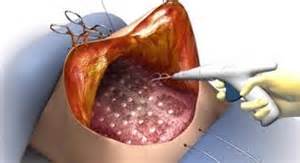The concept of a drainless tummy tuck has been around for several years now and has met with mixed success. Some plastic surgeons claim they never place a drain and do not have any seromas while others almost always place drains with a low incidence of problems including seromas. Patients would obviously not like to have a drain so the appeal not to use one is high.
The current drainless tummy tuck relies on the use of quilting sutures to close down the deep space that lies underneath the skin flap. While effective, it takes additional time and adds expense to place the number of quilting sutures needed. And it is not completely complication free with reported instances of dimpling of the abdominal skin and rarely as a cause of skin necrosis.
A new advance in the drainless tummy tuck is the use of a tissue glue to supplant the current use of sutures. By applying an adhesive substance inside the abdominal wound, the dead space would be largely eliminated through adhesion of the underside of the skin flap to the abdominal wall fascia. In essence, gluing the inside of the wound together and eliminating the space where fluids can accumulate.


The need to aspirate a fluid collection (seroma) after a tummy tuck is not rare. Even in patients that have a drain in place for 7 to 10 days after surgery, the incidence of seromas approximates about 30% in my practice. While never requiring the need for additional surgery, the prolonged need for weekly aspirations places a burden on the patient with an increased number of office visits and some level of chronic discomfort.
TissGlu appears to be a safe and effective method that has a role in tummy tuck as a useful adjunctive aid. It now awaits formal FDA approval and the company to set a price of the surgical adhesive…which will determine what role it will ultimately play in tummy tucks which are most commonly done on a cosmetic fee basis.
Dr. Barry Eppley
Indianapolis, Indiana


